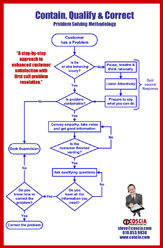Halos, Horns and Those Darn Cell Phones
 Editor’s note: Steve writes, speaks, and consults on customer service.
Editor’s note: Steve writes, speaks, and consults on customer service.
Did you ever meet someone for the first time that you liked almost immediately? Not in a romantic way, but more in a business relationship situation. The chance meeting might be a networking event or a conference. Regardless of the venue, you can’t help but feel positive about the person.
Psychological evidence indicates that we experience our feelings toward something or someone a split second before we can intellectualize about it. That positive feeling we experience is called a Halo Effect.
A Halo Effect occurs when one positive characteristic about a person dominates the way that person is viewed by others. Therefore, non-verbal behaviors such as facial expressions, body language and hand gestures translate much about how we will be perceived by our customers.
The opposite of the Halo Effect is the Horn Effect. The Horn Effect occurs when we allow one weak point to influence everything else. Similar to any behavioral transgression, some are sins of commission and others are sins of omission. How can the omission of behavior get a person into trouble?
In today’s fast-paced world of almost constant interruptions, maintaining good eye contact is a challenge. Some people will make matters worse by placing their cell phone on vibrate mode prior to a business meeting. Have you ever noticed the lack of concentration as someone ponders their uncertainty about whether or not they should answer the vibrating device on their hip?
I see this occur often and it is disruptive, to say the least. The best discipline is to establish a practice of turning off your device prior to the meeting. In the absence of this discipline, service professionals render themselves as discourteous and thereby permit the other person to perceive a Horn Effect, regarding behavior.
When a service professional learns to maximize the Halo Effect to their advantage, then business relationships can flourish. A customer’s perception about us, whether it’s wrong or right, is the reality we will have to handle as service professionals. In this economic climate, a back to basics approach to all customer service behaviors, starting with the eye contact, should be enforced throughout your company.
